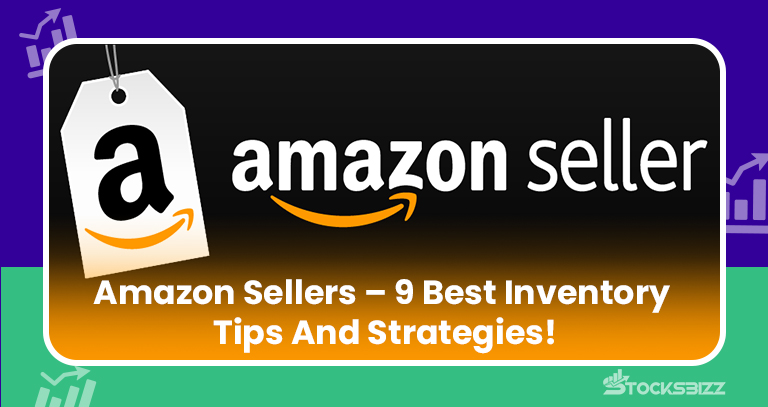Amazon sellers are individuals who have embraced the competitive arena of e-commerce and form part of the selling vertical of the platform.
In the world of e-commerce, Amazon is considered to be the undisputed platform that has garnered the attention of millions of users and shoppers worldwide.
Amazon sellers need to have an understanding of inventory management in order to navigate the expansive digital marketplace.
Inventory management is considered to be an art that has the capability to either make your business or break it.
This blog will shed some light on the best tips and strategies an Amazon seller must embrace to thrive in the ever-evolving online retail landscape.
9 Best Inventory Tips And Strategies For Amazon Sellers
Contents
- 1 9 Best Inventory Tips And Strategies For Amazon Sellers
- 1.1 Embrace Data-Driven Decision Making
- 1.2 Optimize Inventory Forecasting
- 1.3 Diversify Your Product Portfolio
- 1.4 Establish Strategic Supplier Relationships
- 1.5 Implement Just-in-Time Inventory Management
- 1.6 Leverage Fulfilment By Amazon (FBA) Services
- 1.7 Prioritize Inventory Turnover
- 1.8 Monitor Competitive Pricing Dynamics
- 1.9 Implement Automated Reordering Systems
- 2 Conclusion
9 of the best inventory tips and strategies for Amazon sellers include the following –
Embrace Data-Driven Decision Making

In the digital era of today, data is considered to be the king for all types of sellers.
The Amazon platform provides all its sellers with powerful analytical tools giving them invaluable insights about their business with respect to inventory performance, sales trends as well as customer behaviour.
By employing analytical tools as well as using third-party software solutions, sellers are able to make informed decisions that are based on actionable data and lead to optimal inventory management strategies.
Optimize Inventory Forecasting

Effective inventory management can only be achieved with the help of accurate forecasting.
To achieve accurate forecasting, sellers must employ advanced forecasting algorithms that give importance to various factors like seasonal fluctuations, historical sales data as well as market trends.
As the sellers refine their forecasting methods, they can anticipate their future demand with precision which would lead to minimized risks of overstocking or stockouts.
Diversify Your Product Portfolio

Many Amazon sellers are tempted to focus on their bestselling products even though diversifying the product portfolio is essential to mitigate risks as well as tap into new and greater market opportunities.
By carrying on thorough market research, sellers are able to identify profitable niches as well as capitalize on emerging trends.
As a result, the seller has a well-rounded portfolio that is appealing to a diverse range of customer preferences.
Establish Strategic Supplier Relationships
To ensure that your inventory management is successful and effective, you must have a reliable supply chain serving as the backbone of your business.
By having strong relationships with trusted suppliers, sellers are able to get consistent product quality as well as timely replenishment.
Amazon sellers can further optimize their procurement costs as well as enhance operational efficiency by negotiating favourable terms like bulk discounts or exclusive agreements.
Implement Just-in-Time Inventory Management

In the world of today, most of the operations have become lean. As a result, just-in-time inventory management has proved to be a cost-effective approach for inventory optimization.
By maintaining minimum inventory under the just-in-time inventory model and employing drop shipping or third-party fulfilment services, sellers are able to reduce storage costs as well as minimize the risk of obsolete inventory while ensuring timely order fulfilment.
Leverage Fulfilment By Amazon (FBA) Services
Fulfilment by Amazon (FBA) provides sellers with a hassle-free solution for order fulfilment, which allows the seller to outsource storage, packaging as well as shipping tasks to Amazon’s expansive network of fulfilment centres.
By employing FBA, sellers are able to streamline operations, focus on scaling their business without logistical hindrances as well as enhance customer satisfaction with the help of fast and reliable shipping.
Prioritize Inventory Turnover
In order to maintain healthy cash flow as well as maximize profitability, Amazon sellers need to optimize inventory turnover.
Sellers need to set targets for inventory turnover as well as implement strategies like cross-selling, bundling or liquidation which helps in the acceleration of sales and clear slow-moving stock.
Amazon sellers are able to unlock capital for further investment as well as growth by minimizing stagnant inventory.
Monitor Competitive Pricing Dynamics
Amazon is considered to be a dynamic marketplace where pricing is a crucial factor that makes or breaks the sales of a business.
Amazon sellers need to be aware and vigilant of competitor pricing strategies and adjust their prices accordingly and dynamically in order to remain competitive and survive in the dynamic online retail landscape.
Amazon sellers are able to optimize pricing strategies and as a result, maximize their revenue by employing pricing intelligence tools as well as Amazon’s advertising platforms.
Implement Automated Reordering Systems
The traditional manual inventory management processes are prone to numerous inefficiencies as well as errors.
To ensure seamless procurement processes, Amazon sellers must invest in excellent inventory management software that is equipped with automated reordering functionality.
Amazon sellers are able to ensure timely replenishment of stock as well as minimize the risk of stockouts by using automated reordering systems and setting up reorder triggers that are based on predefined thresholds.
Conclusion
To ensure effective and efficient inventory management that helps Amazon sellers maximize their revenue and minimize costs, they must use the 9 Best Inventory Tips and Strategies given above.




